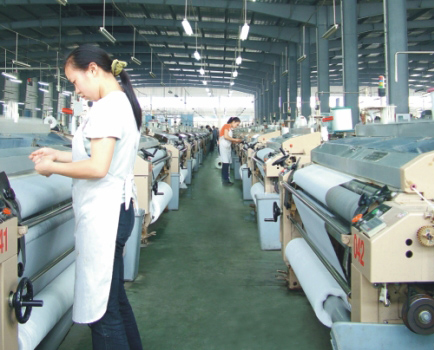Textile exports face industrial upgrading
 According to the information, the International Environmental Textile Association recently released the latest version of the OEKO-TEX Standard 100 (Eco-Textile Standard 100) testing standards and limits for hazardous substances in textiles. The relevant regulations will take effect on April 1 this year. It is understood that since the beginning of 2012, the International Environmental Textile Association has regulated the contents of nonylphenol, octylphenol and alkylphenol polyoxyethylene ether compounds in product certification according to the “Ecological Textiles Standard 100†regulation, and from 4 On the 1st of this month, the item will be enforced.
According to the information, the International Environmental Textile Association recently released the latest version of the OEKO-TEX Standard 100 (Eco-Textile Standard 100) testing standards and limits for hazardous substances in textiles. The relevant regulations will take effect on April 1 this year. It is understood that since the beginning of 2012, the International Environmental Textile Association has regulated the contents of nonylphenol, octylphenol and alkylphenol polyoxyethylene ether compounds in product certification according to the “Ecological Textiles Standard 100†regulation, and from 4 On the 1st of this month, the item will be enforced. The Oeko-Tex Standard 100 (Eco-Textile Standard 100), which was once again the threshold for European and American certification, was jointly developed in 1992 by the Austrian Textile Research Institute, a member body of the International Environmental Textile Association, and the Hohenstein Institute in Germany. The end use classifies the product into four levels: baby use, direct skin contact, direct skin contact, and decorative use. Its standards have an important influence in developed countries in Europe and America.
The "Eco-Textile Standard 100" is the most widely-influenced textile eco-label in the world. It can also be said that developed countries set green trade barriers in textiles. Products that are tagged with "Ecological Textiles Standard 100" must be tested and certified by well-known textile verification agencies (which are all affiliated with the International Environmental Textile Association) in 15 countries. “Eco-Textiles Standard 100†prohibits and restricts the use of known harmful substances that may be present on textiles, including: pH, formaldehyde, extractable heavy metals, nickel, insecticides/herbicides, chlorophenols, cleavable aromatic amines Dyes, sensitizing dyes, organochlorinated dye-conducting agents, organotin compounds (TBT/DBT), PVC plasticizers, color fastness, organic volatile gases, odors, etc. These test items were gradually increased since the introduction of the standard. This time the standard “upgrades†and increases the monitoring of the contents of nonylphenol, octylphenol, and alkylphenol polyoxyethylene ether compounds, which are in line with “Ecological Textiles Standard 100â€. The standard has gradually increased the monitoring project's consistent style, but it also means that the difficulty of passing certification increases, and the threshold for the entry of textiles into the EU market has further increased.
The promotion of relevant certification standards has caused related companies in the textile export industry chain to face the challenges and opportunities of industrial upgrading.
Shaoxing Yichuang Trading Co., Ltd. , https://www.yichuangcc.com